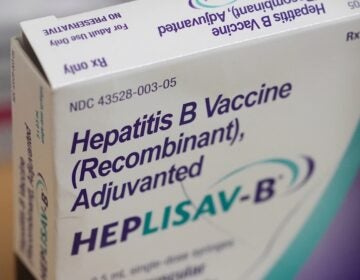New Jersey’s incredible shrinking $225 million Exxon Mobil settlement
Exxon Mobil is proposing to pay $225 million to restore marshes, wetlands, and other natural areas damaged by decades of pollution at two refineries it operated, but a good chunk of that money may never go to that cause.
Under the terms of the tentative settlement reached between the Christie administration and Exxon, the state has agreed to pay its own litigation expenses in the case, a sum that could be sizable and will be subtracted from the $225 million.
The outside counsel hired in the case is entitled to 20 percent of the proposed settlement, if approved, according to the state Department of Environmental Protection. In addition, the firm is likely to receive approximately $5 million to recover certain litigation-related, out-of pocket costs that it paid up front, DEP said. All told, the firm can recover nearly $50 million from taking the case on a contingency basis.
What’s more, the administration in the past has diverted at least $50 million from a previous settlement to the general fund to help plug a hole in the state budget. A spending plan for this year’s budget by the Legislature would have prevented that from occurring, but Gov. Chris Christie vetoed the language in signing the bill. The same diversion is in place under the spending plan proposed by the governor for next year’s budget.
It is unclear whether that money will be use to pay the counsel’s contingency fee or go into the general fund.
The proposed agreement was published yesterday, but the outlines of the agreement provoked more questions from critics, which include environmental groups and Democratic legislators. Their chief complaint is that the deal is significantly less than the $8.9 billion the state originally sought.
In detailing the settlement in a 42-page brief published yesterday, the state attorney general’s office and the DEP called it “fair, responsible, and in the public interest.’’
The DEP described the tentative deal as historic — the second-largest so-called natural-resources damage settlement against a single defendant, second only to a case involving a massive oil spill from the Exxon Valdez in Alaskan waters.
But critics were not swayed. “It looks like a lot worse than what we originally though,’’ said Debbie Mans, NY/NJ Baykeeper, a conservation organization that works to protect the Hudson estuary.
Margaret Brown, an attorney for the Natural Resources Defense Council, agreed. “We did not see anything to assuage our fears that this is not good for New Jersey,’’ she said.
Brown and others expressed concerns involving approving a settlement not only for the refineries in Linden and Bayonne once operated by the company, but also for 16 other facilities and hundreds of retail gas stations.
“At this point, we don’t know about the contamination at those sites,’’ she said. The proposed deal also limits the state from filing future natural-resources damage suits on those facilities unless it involves contamination of groundwater from MTBE (methyl tertiary butyl ether). The substance was used as an additive to gasoline and has been linked to contamination of groundwater in the state.
Bob Considine, a spokesman for the DEP, said the state decided to include those sites in the settlement because possible natural-resources damage claims would be “de minimis’’ — a legal term for “insignificant.”
Others questioned why the state agreed to foot the costs of mounting the lawsuit begun back in 2004 and waged by an outside legal firm hired by the state based on a contingency fee, especially because a trial judge already determined Exxon Mobil’s liability in the case.
“When the state prevails and gets a judgment on liability, it is generally the case where their legal costs are recovered,’’ said Michael Catania, a former deputy commissioner at DEP and now the executive director of the Duke Farms Foundation.
The DEP said the use of outside counsel is not unusual, involving specialized expertise and the ability to expend “significant resources on litigation support,’’ according to Lee Moore, a spokesperson for the agency.
For those who criticize the tentative settlement, the state noted that the Corzine administration tried to settle the case for about $500 million, but Exxon rejected it and walked out of the negotiations. Two other natural-resources damage suits were dismissed by the courts without the state receiving any money, said Considine.
“You have to prove natural-resources damages,’’ Considine said. “It’s not easy.’’
The Christie administration also has defended the agreement, saying it still leaves Exxon Mobil on the hook for cleanup costs at the sites. So far, the company is in compliance with so-called remediation plans, Considine said.
Others disputed that claim, noting a previous settlement ordered the company to clean up the properties.
“Twenty-five years later, you have to ask what have they done to clean up the site,’’ asked Mans. “Not much.’’
Jeff Tittel, director of the New Jersey Sierra Club, noted the cleanup plans do not require the company to remove the contamination of 1,700 acres of marshes, wetlands, and other areas.
“Who does this benefit other than Exxon Mobil? Why are we going this way?’’ he asked.
The proposed settlement must be approved by the DEP following a 60-day public comment period, and also by judge presiding over the case.
_______________________________________________________
NJ Spotlight, an independent online news service on issues critical to New Jersey, makes its in-depth reporting available to NewsWorks.
WHYY is your source for fact-based, in-depth journalism and information. As a nonprofit organization, we rely on financial support from readers like you. Please give today.




